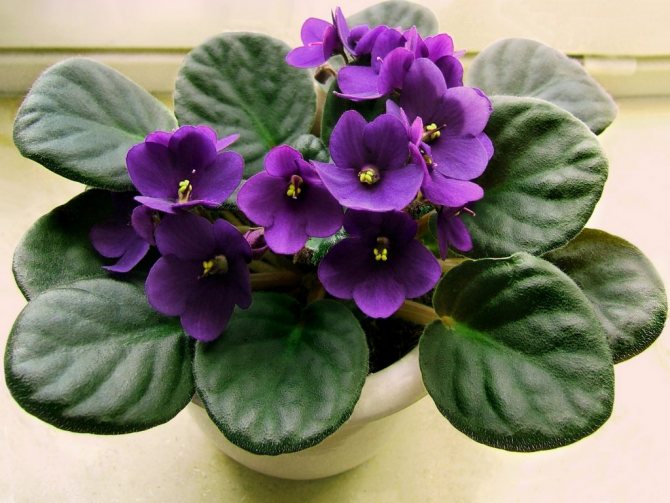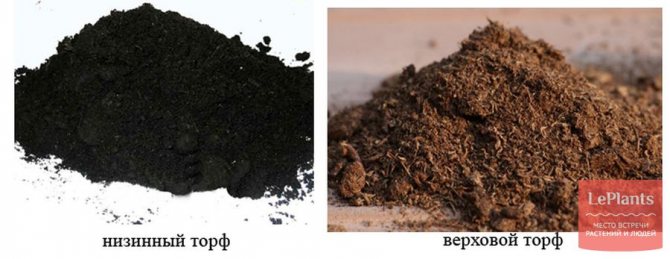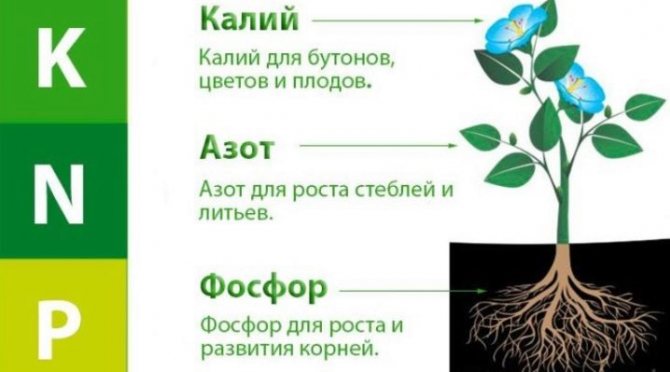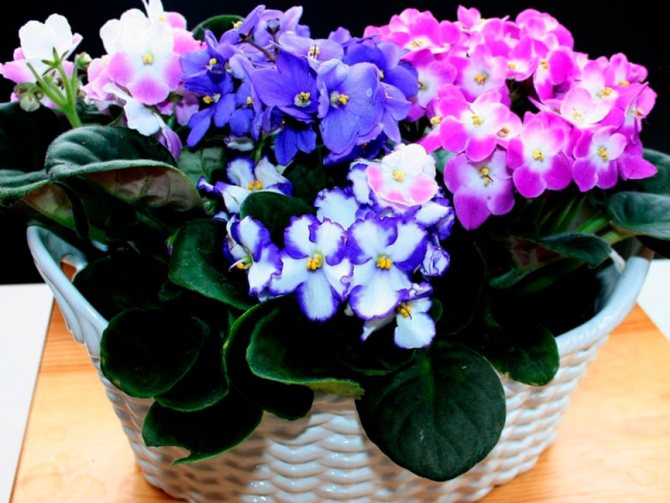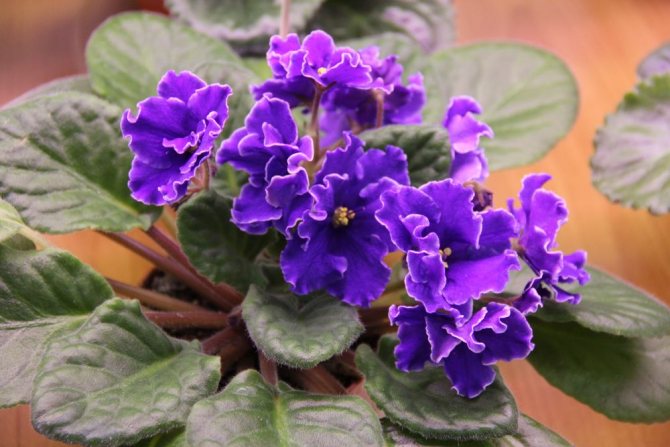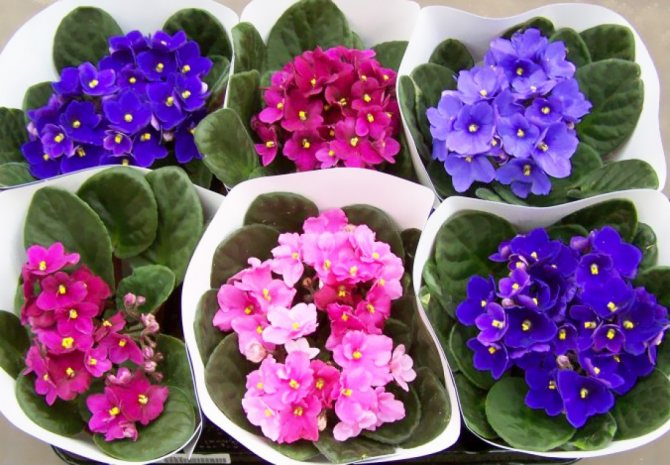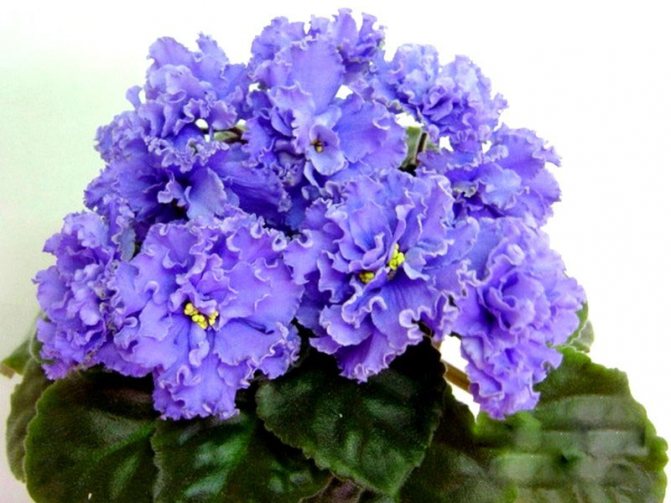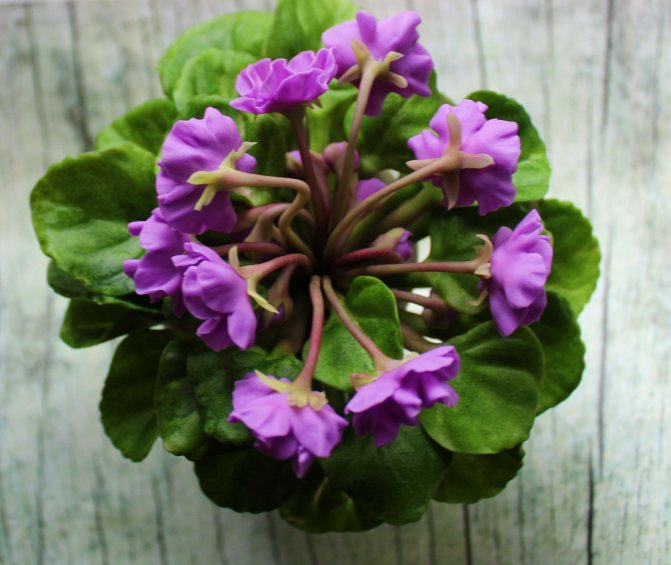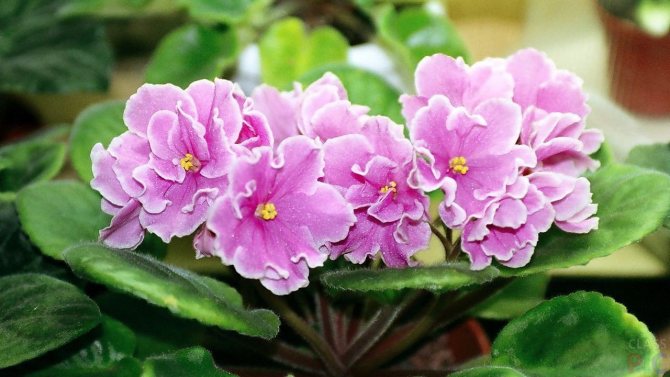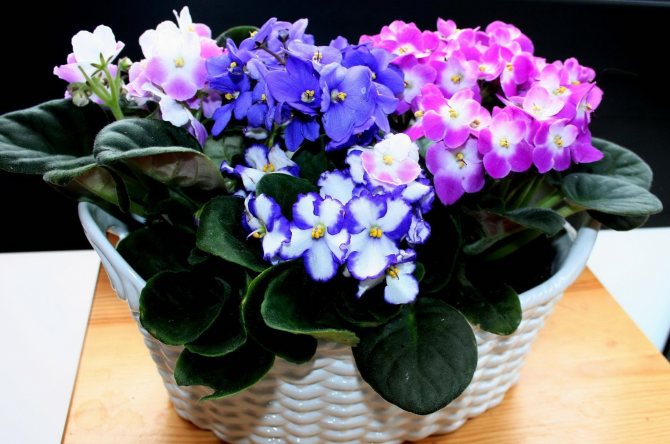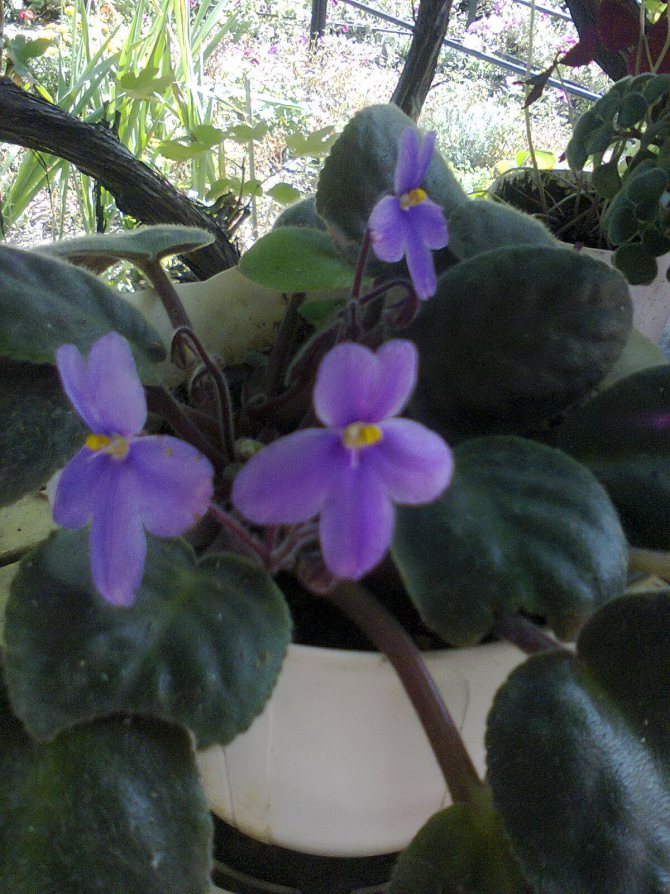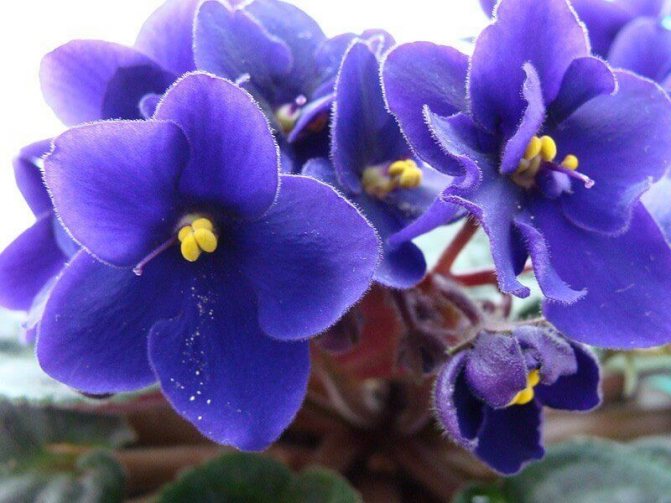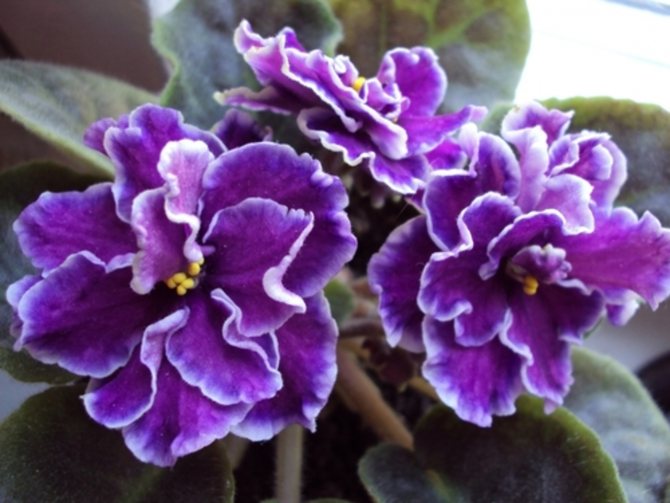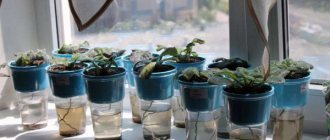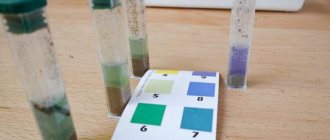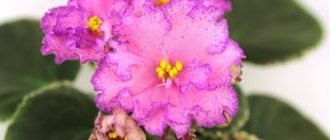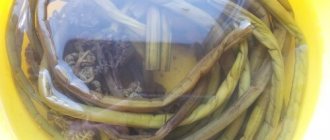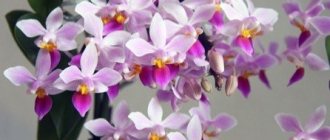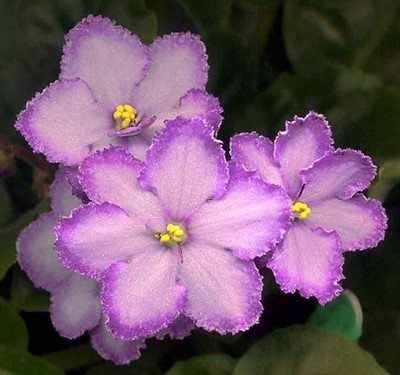
A beautiful and not particularly distinctive at first glance flower - violet, or rather its distant relative, wild Saintpaulia, once grew between stones in the African savannah.
In 1930, active breeding of this plant began.
At the moment, there are already more than 8,500 varieties of indoor saintpaulias.
If you decide to grow a violet at home, then the first step is to figure out what kind of soil you will use. If you make the right decision, the plant will take root well and delight you with its beauty.
In today's article, we will tell you in detail about which soil is best suited for Saintpaulias. Varietal Saintpaulias are especially demanding on the substrate, for example "Dance of Galaxies".
What soil is needed for violets?
Choosing the right soil is quite simple, if you know what kind of soil is needed for flowers, what acid-base balance is required, what composition should be in order to provide the necessary looseness.
Soil composition
The soil at home for Saintpaulias should consist of leaf and coniferous landwhich conduct moisture and air well, turf or high-moor peat.
Required to add nutritious vermicompostwhich provides the plant with all micronutrients. But it makes the soil harder, it will help to fix it vermiculite or perlite.
A small addition will help to retain moisture well. river sand... Many began to add to increase moisture and air exchange coconut substrate.
Acid-base balance
Studying what kind of soil a violet loves, you should pay attention that the soil pH should be kept between 5.5 and 6.5. With a decrease or increase in the indicator, the vital activity of the plant is disrupted. It will not get enough minerals.
Ready-made earthen mixtures for Saintpaulias have the required pH level, which is indicated on the package. To determine the acidity of the earth, special test strips are sold.
Looseness
What kind of soil is needed for violets to grow well? First of all, it is breathable and permeable. To improve these rates you can add to the potting mix:
- granular perlite;
- vermiculite;
- sphagnum moss.
Fertilizers for Saintpaulias
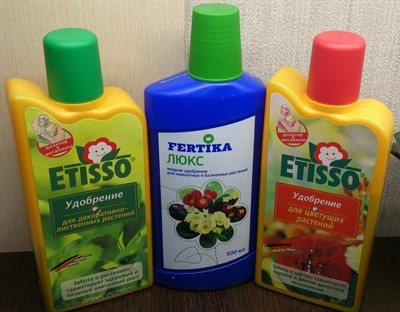

Each plant for full growth and development requires not only light, water and heat, but also fertilizers. The plant receives them from the soil, but the nutrients in it are washed out over time and "eaten" by the roots. Therefore, violets need periodic feeding.
There are two types of fertilizers:
- Mineral;
- Organic;
Fertilizers are: liquid, in sticks, granules, etc. You yourself choose the forms that are convenient for you.
Remember! You should not use fertilizer without reading the instructions for it, and also increase its recommended amount.
N nitrogen - necessary for young plants, enhances the growth of green mass
P phosphorus - needed for buds and flowering
K potassium - prolongs flowering
Vitamins and amino acids - the roots absorb nutrients better.
The basic rules of feeding should be observed:
- Top dressing is applied from above;
- It is better to underfeed the violet than to overfeed;
- Be sure to read the instructions before using;
- Apply fertilizer on time;
- Fertilizer does not replace fresh soil;
- It is necessary to periodically change the food;
- Fertilizers must be applied to slightly damp soil;
- The diseased plant is not fertilized.
If you follow these simple rules, then a healthy plant will grow from a leaf or a baby, which will delight you with beautiful flowers for a long time.
Are you doing everything right, but Saintpaulia does not bloom? We have collected all possible reasons for you in the material on our link. Especially "capricious" to growing conditions are spectacular varietal plants, for example "Raisin" and "Chimera".
Violet is a beautiful and not whimsical plant. However, if you do not provide her with proper care, she will die. To prevent this from happening, create a comfortable environment for her. By planting Saintpaulia in high-quality soil, you will get large and healthy flowers, and your plant care will be minimized.
We recommend all collectors of Saintpaulias to pay attention to such popular varieties of violets as "Frosty Cherry", "Wind Rose" and "Royal Lace". They bloom very effectively and do not require complex maintenance.
Popular ready-to-use mixtures
The range of the flower shop is replete with a variety of soil mixes for Saintpaulias, which have a varied composition. But they are all based on:
- high-moor peat;
- low-lying peat;
- baking powder;
- mineral fertilizers.
Let's take a closer look at what kind of land is good and how growers say about them.
"Flower Happiness" by Fasco
Contains:
- horse peat;
- low peat;
- river sand;
- dolomite flour;
- a complex of mineral fertilizers.
This mixture is professional quality product, which is packed in a package of 2.5 liters in volume.
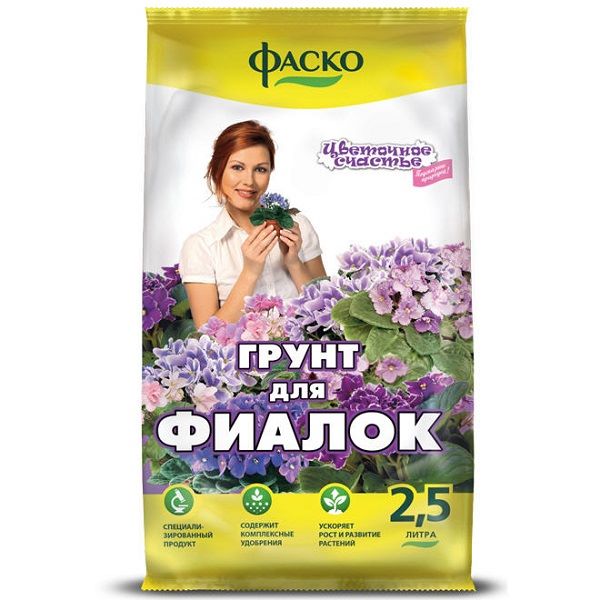

Floral happiness from Fasco.
Reviews about Fasco soil are both positive and negative. The main disadvantage is bad looseness. This problem can be solved by independently adding funds that increase friability.
"Greenworld"
Greenwold soil is completely versatile, suitable for all indoor plants, including Saintpaulias. Comprises:
- high-moor and lowland peat;
- perlite;
- crushed limestone;
- complex of microelements.
Plus, a large assortment of packaging volumes can be noted.
In all respects, this is the best soil: collector reviews about it are mainly only positive. Many grow plants without adding additional products.
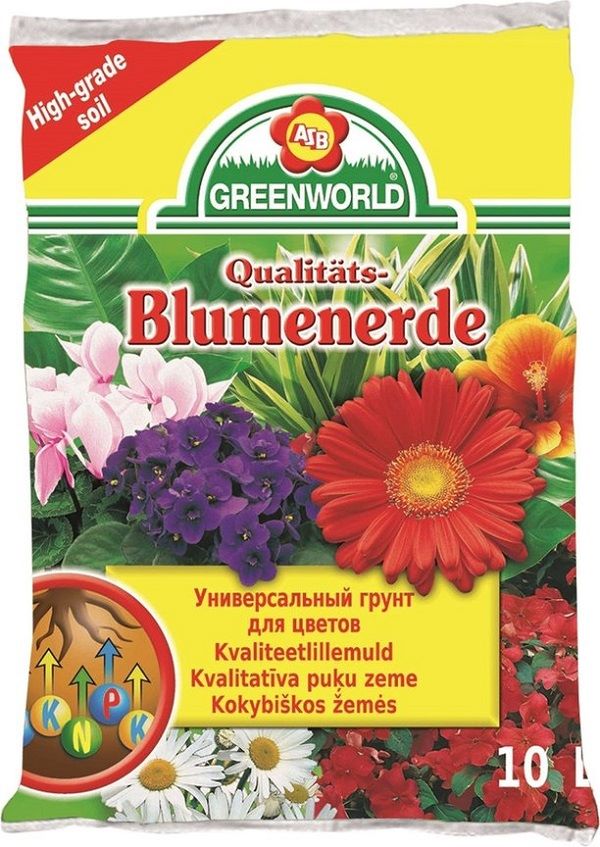

Greenwold universal soil.
"Bereginya"
Comprises:
- high-moor and lowland peat;
- river sand;
- dolomite flour;
- complex of mineral fertilizers.
General plant features
Saintpaulia, or Usambar Violet, is a herbaceous plant belonging to the Gesneriaceae family. The flower is a short evergreen perennial.
Saintpaulia is characterized by a low stem with a lush rosette of leaves in the root zone. The leaf plates are leathery and edged. They resemble hearts in shape. Often, the shape of the leaf is uneven. The tip of the plate can be pointed or round.
The color of the leaves can be represented by juicy shades of green or consist of 2 colors. By the color of the leaf plates, the violet is differentiated by gender. In males, the base of the leaf is clean, in females - with a light spot.
The ornamental value of a plant lies in its flowers. The basket consists of 5 petals and 2 stamens. It sits on a five-leafed cup. Flowers are collected in racemose inflorescences. Depending on the species, they can have a simple or double shape, asymmetrical petals, various edges. The color of the petals can be monochromatic or combine several colors. Color shades are varied.The diameter of the flower ranges from 2 to 4 cm.
Self-made components
Despite the large number of ready-made soils, many growers prefer to prepare their own potting mixmixing the components in a suitable ratio.
The individual components can also be purchased from specialized stores. Thus, you do not have to run around the shops, looking for which land is right for violets.
DIY soil for violets can be prepared from the following components:
- high and low peat... This component is mined in swamps. Low-lying peat is 70% organic, a set of nutrients. It is highly nutritious, but dries quickly, so moisture-retaining components are required. Features a neutral pH. High-moor peat consists of organic matter, mainly sphagnum moss, located on the surface of a swampy area. But unlike the lowland, it has a low nutritional value and an acidic reaction;
- vermiculite or perlite. Both components are of volcanic origin. When using one of them, the soil for room violets will not cake, the formation of a surface crust is excluded. But it is worth giving preference to vermiculite, since it has moisture-retaining and disinfecting properties, some mineral additives;
- sphagnum moss. It will be a useful addition to the mix. It is an excellent baking powder, absorbs moisture, and then gradually gives it to the plant, but at the same time it passes air well, does not rot. How to use sphagnum moss for violets? Chop finely and add to the mixture;
- biohumus. It is a natural fertilizer that nourishes and stimulates plant growth. Consists of compost, recycled organic raw materials and manure;
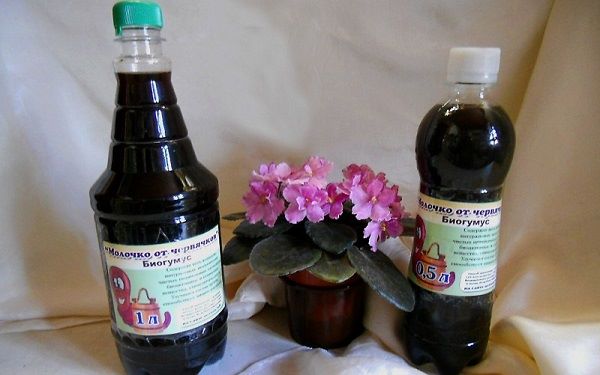

Vermicompost is used as fertilizer.
- charcoal. It is wood that has been charred in an airless environment and has retained its structure. It has antiseptic properties, prevents the formation of rot, absorbs excessive moisture. Powder of charcoal treats plant slices;
- coconut substrate. It is made from a hard coconut shell, in which there are many useful substances, there are no pathogens. It is a natural, environmentally friendly filler. Good moisture retention.
Purchase these components before preparing the ground yourself.
The composition of the earth for violets at home based on ready-made soil. The addition of these substances helps to enrich the ready-mix:
- 6 tablespoons of the purchased mixture;
- 2 tablespoons of vermiculite;
- 1 tablespoon of sphagnum;
- ½ tablespoon of crushed charcoal.
Another recipe based on ready-made soil:
- 4 tablespoons of the purchased mixture;
- 1 tablespoon of vermiculite;
- 1 tablespoon chopped sphagnum
- ½ tablespoon of coconut substrate;
- 2 tablespoons of chopped charcoal.
Recipe based on universal potting mix for indoor plants with neutral pH:
- 6 tablespoons of all-purpose mix
- 1 tablespoon of perlite;
- 1 tablespoon of vermiculite;
- ½ tablespoon of coconut substrate;
- 1 tablespoon chopped sphagnum
- 1 tablespoon of chopped charcoal.
Recipe for how to prepare soil based on lowland and high-moor peat:
- 4 tablespoons of high-moor, low-lying peat, mixed in equal amounts;
- 1 tablespoon of vermiculite;
- 1 tablespoon chopped sphagnum
- 1 tablespoon of crushed charcoal;
- ½ tablespoon of vermicompost.
Sod and leafy ground
Sod and leafy soil can serve as a nutrient base for the soil. They replace the universal primer. Unlike peat, they can be obtained independently in field meadows. To do this, remove the topsoil by 2-5 centimeters.
Leafy soil is the topsoil with fallen rotted leaves under linden trees, fruit trees, or maple trees. Used as an additive to sod land.
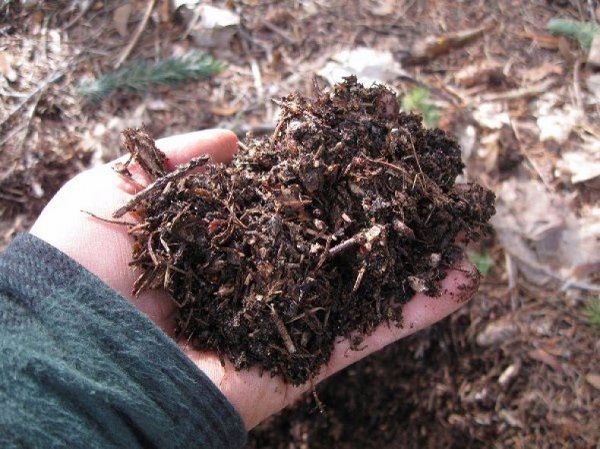

Sod, leafy land is used instead of universal soil or peat. But before using it, it is necessary to warm it up in the oven for several hours in order to disinfect it from parasites and bacteria.
Do I need to add sand?
River sand does not carry obvious nutrients, but makes the soil loose, holds moisture well. In many mixes, it is already included in the composition, so there is no need to add it to ready-made potting mixes. If the soil is prepared independently, then add 1 part of sand to 4 parts of peat.
Which land is better - purchased or prepared with your own hands - it's up to you.
Use of additives
To make the land in which the plants are grown to be as useful and safe for them as possible, the following additives are used:
| Name | Using |
| Perlite (acidic volcanic glass) |
|
| Vermiculite |
|
| Sphagnum (moss) |
|
| Peat - the basis of all potting mixes. (organic matter) | Horse (light)
Lowland (dark)
|
Remember! Moss has all the useful properties only in its "live" form. Moss and vermiculite must be rinsed before use.
You can adjust the amount of additives used at your discretion. You can use our soil recipes as recommendations.
Even the best soil will not help a violet grow well if you water it. How to properly water a violet? Find out in the material on our link.
How to prepare the soil mixture yourself?
If you decide to make soil with your own hands, study the composition that is necessary for different cases. For example, in the case of wick irrigation, special requirements will be imposed on the soil.
For wick irrigation
We have already determined what kind of land violets love, but we will not forget to repeat that the soil used for wick irrigation must:
- have high friability;
- good air flow;
- retain moisture.
therefore it is worth enriching the purchased mixture with vermiculite, agroperlite, sphagnum moss.
Disinfection
The ready-made store mix is completely sterilized before being sold, so it does not need to be disinfected, but you can add a little crushed charcoal to it.
If the land was collected independently, it is necessary bake in the oven for several hours.
Common growing questions
Indoor violet is very popular among flower growers. The plant was discovered in East Africa, and thanks to the active work of breeders, today this crop boasts the widest species diversity, covering a huge palette of shades of many colors.
A beautiful and not particularly distinctive at first glance flower - violet, or rather its distant relative, wild Saintpaulia, once grew between stones in the African savannah.
In 1930, active breeding of this plant began.
At the moment, there are already more than 8,500 varieties of indoor saintpaulias.
If you decide to grow a violet at home, then the first step is to figure out what kind of soil you will use. If you make the right decision, the plant will take root well and delight you with its beauty.
In today's article, we will tell you in detail about which soil is best suited for Saintpaulias. Varietal Saintpaulias are especially demanding on the substrate, for example "Dance of Galaxies".
Growing methods in landless soil: pros and cons
Studying the question of which land to choose for growing violets, some growers stop at a landless option. Such a mixture based on peat or coconut substrate with the addition of baking powder.


Her characterized by a complete lack of nutrients, which are applied independently using fertilizers. It is often used in wick cultivation of Saintpaulias.
The pluses include complete absence of pathogens. But due to the lack of nutrients, they must constantly be compromised from the outside, therefore this method is suitable only for wick irrigation.
Useful video
If you want to make the perfect soil for violets on your own, the following video will be useful to you:
The Uzambara violet is considered one of the most beautiful plants on our planet. This charming creation of nature is very popular among flower growers and often becomes a decoration for window sills. The homeland of the violet plant is Africa, it was here that travelers first discovered it.
Description
Saintpaulia, or Uzambara violet, is known all over the world, it has many varieties and types. This plant has beautiful large and small, double and simple flowers of a wide variety of colors. Saintpaulia belongs to the Gesneriaceae family and is widely used as a houseplant. It pleases with its delightful flowering almost all year round, only in minor breaks does the violet allow itself to rest. The plant has large, fleshy leaves of a dark or light green color (sometimes with a reddish tint). Flowers are collected in inflorescences on long petioles, their color depends on the variety. It can be snow-white and dark red, purple and pink, blue, purple, as well as two-tone beauties.
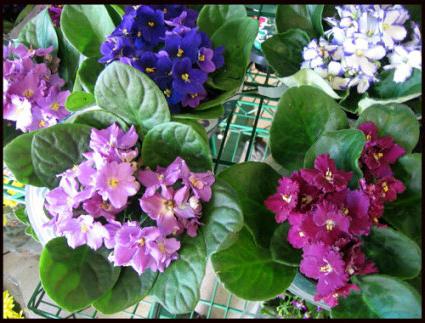

Homeland of the violet plant
This beautiful plant - Saintpaulia - never ceases to amaze with its beauty and tenderness. In nature, it grows on the slopes of the mountains. The homeland of the violet plant is the Uzambar Mountains, which are located in Africa. It was from them that its name came - the uzambar violet. This tiny plant grows in the mountainous regions of Kenya, Tanzania, in the Uzambar and Ulugur mountains.
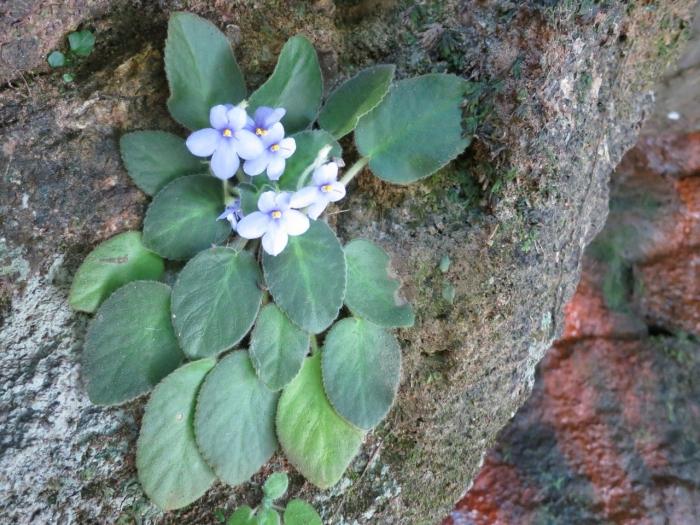

Growing and care
Indoor plants have become an ideal decoration for apartments and premises. Violet, home to the distant African mountains, has become one of the most popular crops in floriculture. For successful cultivation, open, bright areas are required, but direct sunlight should be avoided. The homeland of the violet plant is characterized by a humid mountain climate, so the air should be humidified in winter, when the rooms are very dry. When watering, you must be very careful not to let water get on the leaves and flowers. The soil for the plant should be soft and breathable: it is a mixture of peat, sand, turf and sphagnum moss. Violet propagates using rosettes, as well as from leaf cuttings. An adult plant is transplanted once a year, watering is carried out when the ground is dry. Waterlogging of the soil can lead to root rot and death of the flower.
The uzambar violet is a real miracle! The homeland of the plant - Africa - gave the whole world this magnificent beauty, which everyone can admire at home.
>
The necessary composition of the soil for violets
For normal growth and development of a flower, it needs a special soil - loose, light, with good air and water permeability. Its acidity level should be in the range of 5.5–6.5 pH.Ignoring this indicator leads to the fact that the plant poorly absorbs nutrients from the soil and stops growing.
A change in leaf color may also occur. A decrease in acidity is carried out by introducing dolomite flour into the soil. Raise - stirring peat.
The soil mixture for planting violets should include the following mandatory components:
Nutrient soil
The basis of the potting mix is:
Leafy soil is collected under deciduous trees. Turf - in areas where perennial grasses grow. The soil should be taken in clean areas, away from landfills, garbage dumps, polluting enterprises.


Also, vermicompost and compost can be considered as the main substrate.
Excipients
Fillers for soil for planting violets are:
- coniferous soil - it is mined from the lower soil layer in areas where conifers grow;
- peat soil.
Moisture holders and leavening agents
The main mixture is supplemented with such loosening components:
- vermiculite;
- perlite;
- charcoal;
- sand;
- sphagnum moss;
- coconut fiber.
Good drainage is important for violets. It is necessary to drain water, prevent its stagnation and the development of rot.
Drainage is made from:
- expanded clay;
- pebbles;
- broken brick;
- coarse sand;
- charcoal.
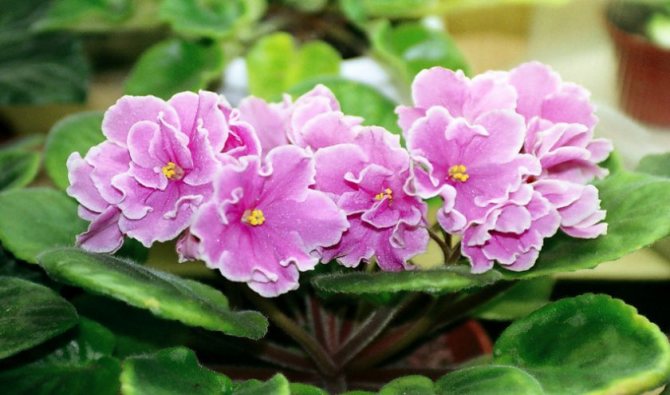

Soil in nature
Preferences are highly dependent on the specific variety of this flower. Some Saintpaulias prefer sunny meadows, hills, mountain slopes, others feel great in shady gorges, thickets of bushes. Still others grow well in swampy soil, while the fourth tolerate drought and poor soil well.
These plants are widespread from the Arctic to Tierra del Fuego, hence the different requirements for soils. Some varieties thrive even in semi-deserts, prairies and seaside dunes.
Some of the varieties are distinguished by lush and very spectacular flowering, for example, the violets "Ice Rose", "Amadeus", "Duchess" and "Wedding Bouquet".
How to choose a ready-made purchased soil
You can buy soil for planting flowers at your specialty store. The packaging of suitable soil says: "Saintpaulia", "Violet", "For sowing seeds and planting seedlings."
Most popular manufacturers:
The purchased substrate has one important advantage - it is already etched and ready to plant. There are no bacteria, fungi, microbes, pests in it, so it does not need additional processing, it can only be doused with boiling water - while the soil made by hand is subject to mandatory disinfection.
The disadvantage of this soil is that it is very light: during irrigation, all the water passes through it, without lingering, and settles at the bottom. Because of this, many growers prefer to supplement the purchased soil with various additives.
One of the options: mix 5 liters of prepared soil with 0.5 liters of vermicompost, 0.5 liters of perlite, 0.5 liters of vermiculite and 0.5 liters of finely chopped sphagnum. Such a soil will have all the necessary properties for the comfortable growth of violets.
Also, some growers buy a base under the ground and add elements like the above to it to improve the characteristics. Usually they take soil from high-moor peat.
Homeland, history and description of the species of violets
The homeland of the flower is East Africa, more precisely, its mountainous areas. Most of the species are common in Tanzania. There are especially many violets growing in the Usambar mountains. Some plant species are found in Kenya, which also belongs to the countries of East Africa.
The flower was discovered in the 19th century by the German baron Saint-Paul. The discovery took place in the Uzambar district, which at that time was considered a German colony. Today this territory belongs to the state of Tanzania.


During the walk, the baron drew attention to an unknown flowering plant. The discoverer's father was a famous dendrologist.The seeds he received from his son, he, in turn, passed on to the botanist Wendland. In 1893, a botanist described a plant grown from African seeds. He named the flower Saintpaulia Violet-flowered.
The first word is derived from the surname of the discoverer, Baron Saint-Paul. The flower received the second word in the name for its striking external resemblance to representatives of the Violet genus of the Violet family. The plant was allocated to a separate genus of clear-flowered dicotyledonous plants and was assigned to the Gesneriaceae family.
In the same year, the plant was presented at the international flower exhibition in Ghent. The right to cultivate on an industrial scale was immediately bought out by the well-known German company Benari.
After 30 years, Saintpaulias have conquered the United States as indoor flowers. At the turn of the 19th and 20th centuries, more than 100 varieties of this culture were known. Today this figure is over 32,000.
Due to the huge number of hybrids, it is very difficult to classify Saintpaulia. Most growers use the American version of the classification. This model is an ordered system of classifications, consisting of the following items:
- Socket size.
- Leaf type.
- Leaf color.
- Flower type.
- The color of the petals.
By the size of the rosette of leaves, the following types of Saintpaulias are distinguished:
| Name | Short designation | Maximum diameter, cm |
| Micromini | mM | 6 |
| Mini | M | 10-15 |
| Halfini (Midi) | SM | 15-20 |
| Standard | S | 20-40 |
| Large standard | L | 40-60 |
Classification by type of leaves is carried out according to the following parameters:
| A type | Description |
| Plate shape | Oval |
| Round | |
| Reniform | |
| Elongated oval | |
| Elongated cordate | |
| Edge features | All-edge |
| Corrugated | |
| Wavy | |
| Jagged | |
| Surface type | Smooth |
| Quilted | |
| Edge | Weak pubescent |
| Strongly pubescent |
According to the color of the leaves, violets are divided into monochromatic and variegated species. The color of the leaf plates can have the following shades:
| Part of the sheet | Color |
| Front part | Shades of green |
| Brown | |
| Blackening | |
| Olive | |
| Gray-green | |
| Green with white splashes | |
| Light green with pink splashes | |
| Seamy part | Light green |
| Pinkish | |
| Whitish | |
| Dark purple | |
| Lilac with purple spots | |
| Green with purple spots |
Classification by flower type provides for the definition of the species according to the following parameters:
- flower shape;
- the degree of terry;
- features of the edge of the petal.
There are such forms of the Saintpaulia flower:
- Classic.
- Anyutka (Pansies).
- Classic star.
- Rounded star.
- Bell.
Read also Simple design of a summer cottage


Violet Pansies
According to the degree of terry, the following types are distinguished:
The edges of the petals of Saintpaulia flowers are as follows:
Most often, flowers of this genus are differentiated by the color of the petals. According to this classification, saintpaulias are divided into the following types:
| Color type | Monochromatic | – |
| Two-tone (two shades of the same color) | Fantasy (specks, rays, spots) | |
| Bordered (border) | ||
| Bicolor | Fantasy | |
| Hemmed | ||
| Finger | ||
| Multicolor | Fantasy | |
| Hemmed |
The color scheme of the color has special designations:
- B - blue, blue;
- P - bright or dark shade of pink;
- O - pale shades of pink and lilac, orchid, lavender;
- R - red, red-brown, scarlet, plum, cherry hue;
- V - violet, purple tint;
- W - white, cream shade, ivory;
- X - two-tone, two-tone color;
- С - multicolor (more than two colors or shades);
- Y - white with yellow.
Creation of natural conditions for growing
Under natural conditions, the flower grows in the highlands of Africa. To create conditions for the violet as close as possible to natural, the following recommendations should be followed:
| A type | Description |
| Lighting | Daylight hours from 12 to 14 hours. Bright, diffused light. |
| Temperature | +18 - + 24 ℃. Sudden temperature jumps are undesirable. |
| Air humidity | Common for living quarters. |
| Watering | 2 times a week by bottom irrigation (through the pallet). |
| Fertilizer | 3 times a month with mineral fertilizers for flowering indoor plants. Use half of the indicated dosage. |
| Dormant period | Short. Cancellation of complementary foods, reduced watering and temperature reduction (maximum limit +15 ℃). |
| Flowering period | Complementary feeding 3 times a month with mineral fertilizers for flowering indoor plants according to the dosage indicated in the instructions. Watering every other day. |
| Transfer | Annually. It is advisable to transplant the flower in March using the transshipment method. |
| Pruning | Timely cleaning of the bush from wilted flowers and leaves. Maintaining a three-tiered leaf shape. |
| The soil | Sod land, leaf land, sand, humus (0.5: 2: 1: 1). It is advisable to add some sphagnum moss. The drainage layer takes up 1/3 of the pot. |
| Pot | Small, made of plastic. The presence of drainage and pallet. The diameter of the neck should correspond to 1/3 of the diameter of the rosette of the leaves. |
| Hygiene | Obligatory removal of dust from sheet plates by means of a warm shower under running water. |
| Location | North, north-west, north-east side. |
The violet can be affected by fusarium, powdery mildew, rust, gray rot, and late blight. It is also a tasty morsel for pests: spider mites, scale insects, aphids, thrips, nematodes, worms, whiteflies, woodlice, flies, mosquitoes.
How to make a substrate with your own hands at home
There are several recipes for making potting soil for violets. Each of the owners of violets can choose a ready-made one for themselves or make their own, combining the ingredients listed above. The main thing is to end up with a loose, light, homogeneous substrate that is able to conduct air and water well to the root system.
We suggest you familiarize yourself with one of the most accessible recipes.
DIY soil mixture for violets: video
It will require:
- light loose ready-made substrate on high-moor peat containing nitrogen, phosphorus, potassium and microelements - 10 liters;
- crushed activated carbon - several tablets;
- agroperlite - 1-2 pinches;
- vermiculite - 1-2 pinches.
All ingredients are combined in one container and mixed well.
Testimonials
- Marina. I bought this ASP GREENWORLD soil in 2015, wonderful, loose, no debris. The seedlings turned out to be wonderful. I fully recommend it to everyone!
- Irina. I purchased the Terra-Vit soil, a fairly good specimen, although there were some particles of debris and foreign matter. In general, I recommend the product for use.
- Anna. I love plants, in particular, violets, I haven't fertilized the soil for a long time. I decided to buy Bereginya soil in the store. After unpacking, I was surprised. This mixture was clearly not cleaned as the mass did not look homogeneous and there were also foreign substances present. I do not recommend the soil, but it's up to you !.
Saintpaulia
Violet is very demanding on good soil, so the "dig at home" option is not suitable for her. In such a land near the house there will be a mass of fungi, viruses and bacteria, and Saintpaulia is a delicate plant and can easily die from the slightest disease. Moreover, the composition of the soil for room violets should include a certain amount of nutrients, and the acidity level should be close to slightly acidic. The soil should be loose and have good air permeability, it is unlikely that the soil from the lawn will correspond to all these nuances. Novice violet growers are often disappointed. Watering was normalized, the lighting was good, but the plant suddenly died, and why is not clear. The reason, in addition to possible infections, may be overly nutritious and dense, heavy earth - it is completely unsuitable for the root system of violets.
Making your own substrate
Indoor flowers can be pleased by making a substrate for violets with your own hands.There are several recipes for the substrate for violets, but which one is right for you - you can only decide empirically. So, what are the rules for composing a soil mixture for your houseplant?
- We take universal soil (or specially designed for violets), mix with peat (we adhere to a ratio of 1: 2). Next, add one part of perlite to this composition (you can replace it with moss or vermiculite). At the end, you need half a serving of charcoal. Feel free to plant your violets in such a substrate.
- Mix nutrient soil, perlite, sphagnum moss and charcoal in a ratio (6: 1: 1: 1). In this composition, violets will also grow well.
- Add vermiculite (one part) to peat and nutrient soil (in a ratio of 3: 1). To this mixture, you need to add half a portion of charcoal, and it will be suitable for use.
- Four parts of peat soil will require one part of sphagnum moss and half a part of perlite (or vermiculite), as well as coconut fiber. A small amount of charcoal can be added to the resulting soil mixture to improve its properties.
Where are you from, pretty violet?
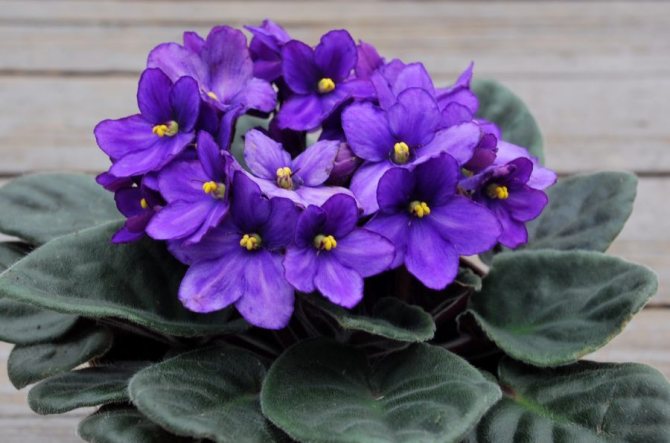

For many girls, growing room violets becomes a real hobby. The flower has a capricious disposition, needs care and regular care. In short, the violet is an amazing and at the same time very demanding beauty-flower. When you fulfill all her whims and whims, the return will be maximum. Indoor plants will delight you with a stunning appearance, pleasant aroma.
- Features of Saintpaulia, its appearance
- The most extraordinary story about the origin of Saintpaulia
- We also recommend reading
- Professional gardeners - about the nuances of care
- Soil preparation for Saintpaulia and irrigation features
- How do plants reproduce?
Professional gardeners - about the nuances of care
Planting and leaving have their own specifics. The plant does not like cold and reacts to it very quickly. Humidity and light are another matter entirely. But here it is also important not to overdo it. In a plant such as a violet, almost all species need shade if it's hot and sunny outside. The duration of daylight hours should be 13-14 hours.
Violet is an amazing, delicate "beauty" among other flowers. Gardeners fell in love with the marsh violet, moth violet and some other varieties for their exuberant flowering (sometimes up to 9 months). In order for you to observe beautiful blooms for as long as possible, planting and maintenance should also include sufficient lighting. For this, the creeping violet and the night violet are placed on windowsills that face west, east or north. Windows on the south side will work too, but it is advisable to place the pots on a table or rack in the back of the room or to the side of a window.


As for the temperature, the range from +18 to +24 is considered optimal. In violets, growth and reproduction deteriorate when changes in cold and heat are observed in the apartment.
In apartments and private houses, pansies are rarely found (the violet does not grow well in greenhouse conditions), as well as the marsh violet. Preference is given to ampelous varieties. They are distinguished by rather voluminous rosettes, stems falling down.


Legends: the place in history where they grew up
Many legends, stories, myths, signs and superstitions are associated with the violet. They talk about where the flower comes from and how it could have been born in general.
The ancient Greeks dedicated a whole legend to the violet, telling about its origin. Once the god of light and sun Apollo incinerated a young nymph with hot rays. The girl, exhausted from the heat, with her last strength asked for help from the great Zeus.


According to legend, Zeus created a violet, saving it from Apollo
He felt sorry for the poor thing and turned her into a violet, hiding from the scorching sun in a shady forest near bushes. He hid it on purpose so that no one but him could admire the gentle beauty.He alone could enjoy the beauty of the violet until the day his daughter Persephone came to the forest for a walk.
She found a beautiful violet and plucked a bouquet. When Persephone turned back, she was kidnapped by Hades. Frightened, she dropped the bouquet, and delicate flowers woke up from Olympus to the ground.
Among the ancient Greek legends there is another story about the appearance of the violet... Once the goddess of love and beauty Aphrodite wanted to plunge into the gentle waters of the grotto, but noticed several men who were spying on her, wanting to contemplate the ideal body of the goddess.


According to another legend, violets appeared at the request of Aphrodite
She got angry and demanded from Zeus the most cruel punishment for the curious - death. Zeus did not fulfill his harsh will and turned men into beautiful flowers that still resemble prying eyes.
On a violet the psychological situation in the apartment affects and the mood of the residents. She is considered a symbol of stability and harmony. It has a beneficial effect on the home atmosphere, clearing it of negative energy and bringing well-being and prosperity to the house.
If a flower dies, it is believed that she took the disease of the tenant for herself. When someone is sick in the house, the plant gradually withers away, sharing his pain with the sufferer. Violets of different colors have different functions.
White flowers help young children fight aggression. Varieties with white flowers are recommended for people with a fine mental organization: a person ceases to be upset over trifles and less worried. White violets help to survive a break with a loved one and cleanse the soul from quarrels.
Red and pink flowers have a beneficial effect on health. Red varieties help in the fight against addictions and bad habits.
Red violets well suitable for people with a pessimistic attitude and life dissatisfaction.
Varieties with red and pink flowers help to overcome depression.
Purple flowers are recommended for people with the professions of a psychologist and teacher. This color is a symbol of wisdom and spirituality. Purple violets help to find a common language and establish contacts.
In addition to a useful moral influence on a person, they can also bring practical benefits. They say that they can drive ants out of the house. Violet is an indicator of a healthy family and a favorable psychological environment in the house, therefore, it should be carefully looked after.
Fairy flower
The home violet has become a truly fabulous flower. See what a variety of colors, shapes, sizes! For every taste. There are large violets with huge flowers, there are mini and microfillets growing in a small glass, ampelous with hanging branches, trailer in the form of a blooming ball. And what a variety of shapes and colors of flowers! Simple, terry, all kinds of colors, multi-colored, speckled, so-called fantasy varieties, striped chimeras! And more and more new varieties appear.
Popularity of the house
Ashney's violet is only growing. She won the hearts of millions of people around the world. The home violet blooms successfully under artificial lighting all year round in the apartment, which is especially pleasant in the conditions of the polar night in the far north. The industrial production of home violets has been established, and special varieties have been developed for this. Societies were created that unite collectors of violets in various countries, exhibitions and auctions of Saintpaulias are held.
What is pH and why it is so important to know it
Natural land in different regions of our country is different: one contains more sand, the other is loamy. As a rule, it is always quite "heavy" for violets and requires the introduction of additional components in significant quantities.
Saintpaulia is also important for normal growth and flowering. soil pH.
It is an indicator of the concentration of hydrogen ions (H +) in the soil, i.e. its acidity. The lower its value, the more acidic it is.
Saintpaulias prefer slightly acidic soil (6.3–6.8), close to neutral. How can you be sure that the soil you have mined has the necessary acidity? This means that you need to acquire a special device for measuring pH, or at least indicator strips (although they show only approximate values). ON THE PICTURE:
An electronic pH meter will accurately determine the acidity of the soil, but not everyone can afford it. The budget option - indicator strips - will not give the desired measurement accuracy
Well, so decide: do you need this hassle with natural land?
Choosing the right flower pots for violets
When choosing pots under Saintpaulia, adhere to the main rule: the diameter of the container should be three times less than the violet rosette. A pot that is too small or too large may be the main reason why the violet is not blooming. Saintpaulia pots should not be too high, because the roots of these plants germinate to a shallow depth, and for good flowering, the root system must tightly entangle the pot. For miniature varieties, pots with a diameter of 4 cm are quite suitable, for the rest - with a diameter of 5 cm to 9 cm.
What material should be used for pots for violets? For small children and the germination of leaf cuttings, plastic cups or peat-distilled tablets are quite suitable. For adult plants, you should purchase a clay or plastic pot:
- Plastic pots are good for their economical price, light weight and wide range of colors. They do not need to be looked after in a special way, but outwardly plastic pots are not particularly decorative.
- The advantages of clay pots are their external beauty and good air and moisture conductivity, so that the roots of Saintpaulia do not rot. But the cost of such pots is more expensive compared to plastic ones, the weight is heavier (you can't put on glass shelves for violets), the earth dries out faster, and after each use the pot has to be thoroughly washed and boiled.
For small children and the germination of leaf cuttings, plastic cups or peat-distilled tablets are quite suitable.
Features of placing violets on racks
Many growers think about the need for shelving for indoor plants only when all window sills, shelves and bedside tables are already occupied with flowers. But racks for violets should also be provided because on shelves equipped with additional lighting, Saintpaulias grow more actively and bloom more abundantly. Having put the uzambar violet on the windowsill, you will wait for it to bloom only by the beginning of May, since the flowers on the windowsill have enough light only from March to September. But violets need twelve hours of daylight for good health! Therefore, with year-round illumination of the shelving, saintpaulias will bloom much more often.
Video about growing violets
It is not difficult to make a rack for violets with your own hands; on the Internet you can find various schemes and build a structure exactly according to the given dimensions. For example, you can make a rack of four shelves measuring 130 cm by 55 cm. Place them on top of each other at a distance of 50 cm, and attach a fluorescent lamp to two lamps under each shelf. The optimal distance from the violet to the lamp is at least 30 cm if the sockets of plants are large, and about 20 cm for small outlets. The backlight for violets should be bright, stronger than for reading.
If your hands do not yet reach the construction of the rack, you can also use the stands for violets, which are sold in a wide variety in stores. Just think in advance how you can provide lighting for the violet stand.
- Peter
If you decide to plant a room violet on your windowsill, you need to know about all the intricacies of caring for this miniature flower, taking into account the varietal characteristics (after all, it is the varietal preferences that determine the specifics of caring for the plant). One of the important aspects is the soil for Saintpaulias, the choice of which must be approached extremely responsibly. In this article, we will tell you what kind of land to plant violets, and we will consider all the options - from ready-made potting soil to self-prepared soil substrates.
Transplant methods
There are several ways to transplant a plant.
- Replacing old soil... This can be during the acidification of the soil or the wilting of the bush, when the soil is completely removed from the roots, washed under running water and planted in new soil. In this method, you can examine the root system and remove rotten roots to a living area. If in the process of work a lot of roots are removed, then the pot can be left the same or take less.
- Partial soil replacement.
- Transshipment... When a clod of earth remains completely on the bush.
Complete soil replacement
- Transplant with complete soil replacement The soil is pre-watered in one hour so that the lump is wet and well pulled out.
- Remove the soil from the roots and rinse them under running water.
- Leave to dry for a while.
- Examine the root system and remove any rotten areas.
- Sprinkle the cut areas with activated carbon.
- Free the plant from buds and yellow leaves.
- Drainage is laid at the bottom of the pot, earth is poured on top of a slide.
- The soil should be moist, but not wet.
- The socket is inserted and gently pressed from all sides.
- You can water it only after a day.
- If the ground has subsided, add bare spots.
Partial soil replacement
The partial replacement method is applied to small varieties.
- Here it is enough to select the top layer of soil and fill in a new one.
- Or pull out a lump, shake off some of the earth and put it in a new pot.
- The roots are examined and trimmed if necessary.
- Then, the rosette is set in the ground.
Transfer method


Transfer by transshipment
The transshipment method is used for plants with a fragile root system and when a flower needs to be rescued.
- The earthy ball completely remains on the violet.
- A larger pot with drainage is being prepared.
- Then, a violet with an earthen lump is installed and earth is poured from the sides and well crushed.
- The height of the new and old soil must be at the same level.
- Further, the flower is watered several times. Until water appears in the pan.
- So it costs about 2 hours, then free the tray from the remaining water.
- Further, the violet is watered when the soil is completely dry.
We make an earthen mixture
Depending on the qualitative composition of the purchased soil, the number of baking powder used will differ: more should be added to denser soil. But the principle is still the same. The approximate composition for transplanting adult Saintpaulias will be as follows:
- purchased soil - 5 liters;
- perlite - 1 glass;
- vermiculite - 1 glass;
- finely chopped sphagnum moss - 0.5 liters (about two handfuls);
- charcoal - half a glass.


ON THE PHOTO: Components for making an earthen mixture in which Saintpaulias will grow
If you are missing some of the components, you can compensate for it by increasing the amount of another. For example, replace perlite with vermiculite, and vice versa.
Different varieties of Saintpaulias also prefer different acidity. Some grow well and bloom in almost neutral soil; others will show themselves best in more acidic conditions. But this is a topic for a separate discussion.
It should be noted that for rooting of leaf cuttings in the soil of baking powder, it is necessary to add more in volume - up to 50%.
Do not be afraid to experiment in search of your "magic" earthen mixture, but do not overuse them either. If your violets are growing and blooming well, then everything is in order. Remember that the best is the enemy of the good.
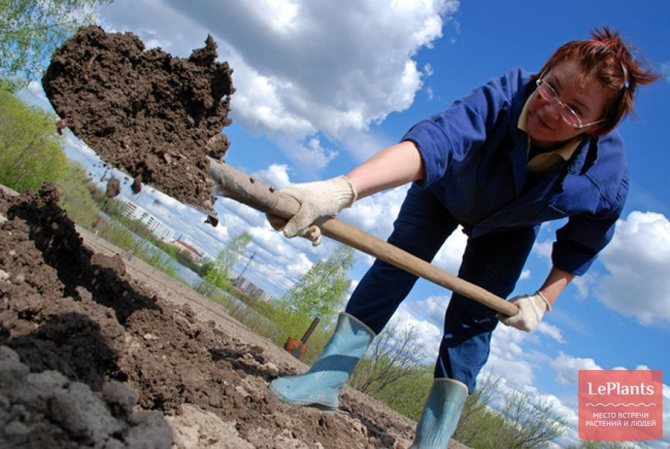

ON PHOTO: Are you still digging?;)
How do I land?
Planting Saintpaulia at home is possible in several ways.
Scion
Reproduction of violets by shoots is carried out in order to maximize the preservation of varietal characteristics. Planting Saintpaulia step by step using this method is as follows:
- side sockets are separated from the main bush;
- after that, the stepsons are placed in a small pot of soil;
- as needed, watering of the planted offshoot is carried out;
- after the growth of the bush, it is transplanted into a pot that is more suitable in size.
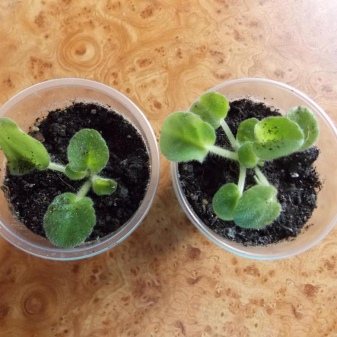

A wick is often used for even and optimal watering of Saintpaulias. To land in this way, you will need a moisture-absorbing tourniquet and a container with perforation at the bottom:
- the wick in the pot is pulled through the bottom hole, leaving about 1/3 outside;
- a small amount of soil must be poured onto the bottom of the container and a wick must be folded over it with a ring;
- the remaining soil is poured over the ring and the plant is planted;
- in the future, a pot with a violet is installed in a tray through which watering takes place.
Ready-made soil mixtures and their composition
Many people ask us the question - which soil to give preference to - purchased or made independently. We believe that the soil mixture "collected" by our own hands will be of better quality. Buying primer from the store can cause some problems. They are associated with the following points:


- The soil is not sterilized, this, over time, affects the change in chemical indicators.
- Parasites. There is a possibility of buying contaminated land.
- Fertilizers. It is possible to purchase land both with an overabundance and with a shortage of nutrients.
- Dark, almost black ground. Consists of low-lying peat, which quickly turns sour.
If you nevertheless decide to purchase soil in the store, pay attention to the color, it should be reddish-brown, with coarse peat.
This table shows the optimal soil for planting violets.
| Name | pros | Minuses | Cost for 5 liters. |
| ASB GREENWORLD Universal, Germany |
| Relatively high cost. | 200 p. |
| FASCO. Flower happiness. Soil for violets |
| We have not found | 90 p. |
| Klassman TS-1, Germany |
| Not sold in small quantities. | 150 p. |
| Coconut soil |
|
| 350 RUB |
IMPORTANT! Before planting the plant in the ground, make sure that the planting material is sterilized and not contaminated. All purchased soil, as well as sod, leaf and dung humus, must be disinfected.
And here are examples of soils that consist of low-lying peat and quickly cake:
- Saintpaulia "Biotech";
- Saintpaulia "Garden of Miracles";
- Saintpaulia "Garden Garden".
These mixtures are not suitable for growing violets, but can be used as a basis for manually composing the substrate.
Any soil depletes over time, so we advise you to find out in advance which fertilizer for violets is better to use.
Land laying technology
Hand-made soil must be disinfected - sprinkled with 1% potassium permanganate solution or calcined in an oven (microwave) at a temperature of + 90 ... + 100 ° C.
After the soil has been disinfected or spilled with boiling water, it must be left for a month so that it regains its properties. Then it is fertilized and proceeds to the process of laying in a pot.
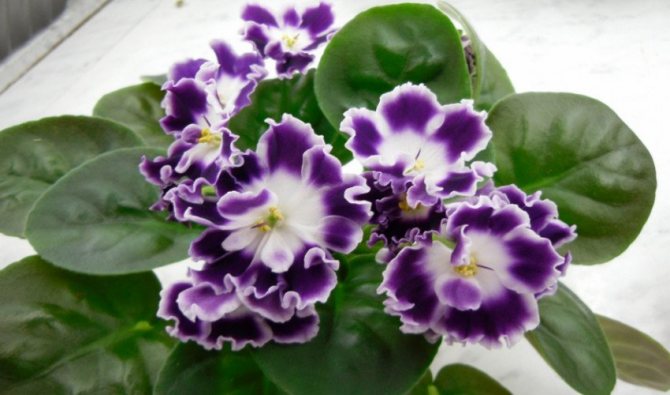

The laying technology is as follows:
- Lay a drainage layer on the bottom, which should occupy 1/3 of the height of the pot.
- Cover up a small layer of soil.
- Set the roots of the violet.
- Cover with the rest of the earth, without tamping it.
When placing a flower in the ground, it is necessary to ensure that the growth point is not covered, the roots are not bent and the lower leaves do not touch the ground. The first watering will need to be done after a week, and the first feeding - not earlier than 2 weeks later (if additional fertilizers were not applied during planting).
Summing up, we note that the cultivation of violets is associated with certain troubles. The most important thing is to choose the right place for it with good lighting and the soil recommended for its composition, as well as to ensure proper watering. But all efforts to care are more than offset by the unique look of bright and abundantly blooming violets.
How to choose a container for a plant
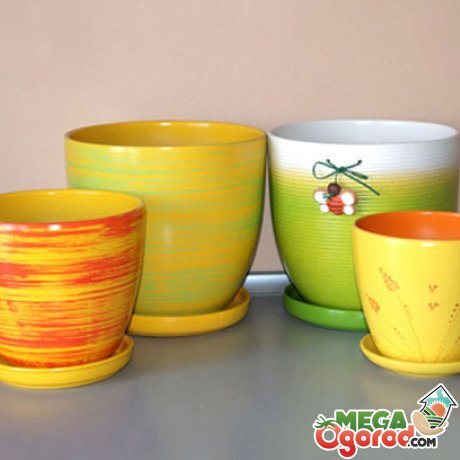

Choose a pot for planting homemade Saintpaulia thoroughly. This plays a large role in the development and flowering of the plant. The capacity is selected taking into account the diameter of the rosette of leaves. For children, a flowerpot 6-8 centimeters in diameter is suitable, for an adult plant, 9-10 centimeters.
In this case, the height of the container can reach no more than ten centimeters. If the pot becomes small, then the violet will not bloom. And in a large-diameter flowerpot, the soil will begin to acidify, since the roots of the plant will not use it in nutrition. The soil will cake, rot, which will affect the plant.
The diameter of the pot is measured by the size of the leaf outlet, halving it.
The best material for a flowerpot would be plastic or ceramics. But be sure to put a pallet under the container, and the bottom of the pot has holes. Then excess moisture will not accumulate inside, and the plant will avoid fungal diseases. Carefully choosing a container for a violet, one must remember that its roots are small and fill the entire volume of the soil mixture.
Prevention and control of diseases, pests
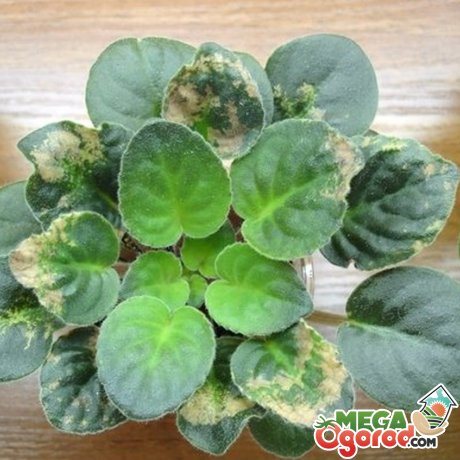

Saintpaulias are subject to various fungal diseases:
- Rot fungi affect the root of the plant. From this, the flower begins to wither, and if it is not transplanted, it will die.
- Whitish bloom spreads to the leaves, stems - these are the first signs of powdery mildew. The disease actively occurs if the plant does not receive enough light, and the room has high air humidity. Treatment with Topaz will save you from the fungus three times with a break of ten days.
- Phytosporosis spores destroy the roots and leaves of the plant. You can treat a violet by transplanting its children into another container.
- Fusarium begins with rot on the roots. And the flowering bushes at the same time begin to weaken, turn yellow. A diseased plant cannot be saved; it is destroyed. And healthy flowers are treated by spraying with Fitosporin.
Of the pests, nematodes, spider mites, and larvae of sciaris midges most often attack Saintpaulia. Pests suck the juices from the leaves of the violet, eat parts of the plant. You can fight parasites with insecticidal preparations such as Aktara, Fitoverm. The health of the uzambara violet depends on the growing conditions, flower care.
More information can be found in the video:
Ratio
It can be different. Each grower independently determines the set of additives, taking into account personal experience and where and in what place the main natural material was collected. On average, perlite and vermiculite are mixed in a ratio of 1.5: 1, and one glass of this mixture is added to a bucket of prepared soil. Thus, the soil for room violets will be saturated with all useful elements and protected naturally from fungi and bacteria. And most importantly, all these additives are of natural origin, there is no chemistry in them, they are absolutely safe for both plants and humans.
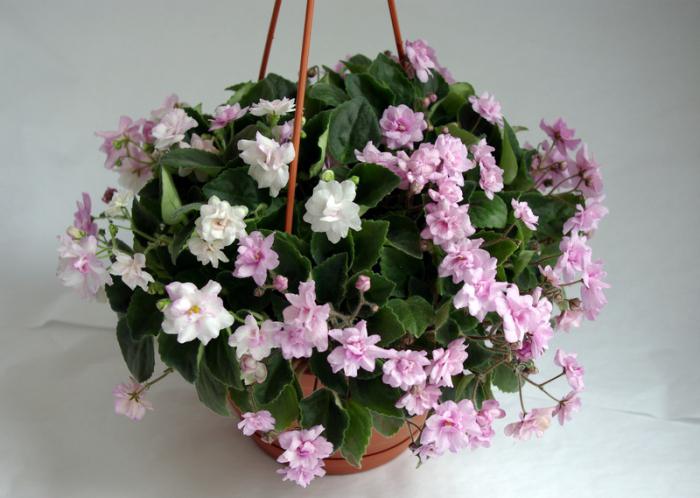

Buy or do it yourself
Buy is the simplest solution. Moreover, a lot of soils for violets are sold, and they are relatively inexpensive.
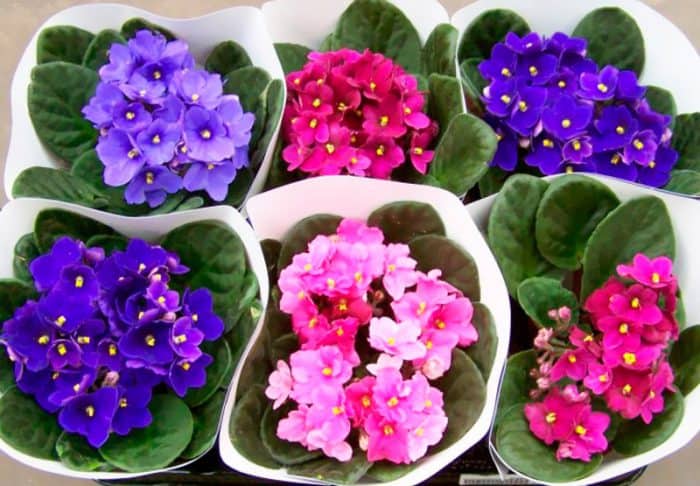

But experienced flower growers are sure: in most of these soils, peat is the main component. When watering, it begins to "cackle" and harden, and now three months pass, and the roots of the planted Saintpaulia no longer receive the required amount of oxygen.
Therefore, you can either often transplant a flower (but he does not like such procedures), or carefully choose soils, re-reading the compositions on the packs and reviews on the Internet.
But the best thing is to make the substrate yourself.
Although, of course, if you have just started to get involved in violets or flowers in general, in your apartment you probably won't find a bag of vermiculite and similar materials. The best solution for you is still buying soil. The consultant girl will tell you how to choose it in the store:
What components are used to prepare the substrate for Saintpaulias
- Deciduous humus.If you harvest it yourself, look for birch - it provides the best raw material for this humus.
- Turf. This is the top ball of soil in a deciduous forest, intertwined with the roots of grasses and other plants.
- Perlite and / or vermiculite. Small pieces of minerals are sold at most flower or gardening shops. These substances come in different fractions (sizes). Take small stones. They are added to the soil for loosening. At the same time, vermiculite can retain moisture after watering, and then slowly give it to the roots of the flower.
- Moss is sphagnum. Another option is to fluff the soil. It is added to the basic composition of the soil or used instead of vermiculite. Moss can be bought at the store or found in the forest, in a swamp, or near a body of water. Conveniently, sphagnum is used both raw and dried. Have you picked up a lot of moss and have no time to dry it? Freeze the sphagnum, and just let it thaw before the next use.
- Sand. You need a large river. This additive also makes the soil airier, simultaneously protecting the substrate from drying out.
- Peat. Be careful with it: on the one hand, it is nutritious and light, on the other, as I said, it can thicken. So add it a little at a time.
- Coconut substrate. This is a commercially available substance, although it can also be prepared if you buy coconuts. Like peat, it is used as a minor nutritional supplement to the basic soil composition.
Important! The ingredients collected in the wild (even in the most super eco-friendly reserve) must be thoroughly disinfected. Humus, turf and peat can be calcined in the oven or held in a water bath, rinsed the sand, then calcined, and pour boiling water over the sphagnum.


And of course, with the purchase / procurement of all these substances, immediately plan the purchase of drainage to the bottom of the pot. Fill the vessel chosen for Saintpaulia at least 1/3 with expanded clay, then add a layer of charcoal (it will additionally nourish the flower, and also protect it from rot), and only then add soil.
The best recipes
- For newbies. 3 shares of deciduous humus and turf, 2 shares of sand and sphagnum, 1.5 shares of perlite and 1 share of vermiculite, a handful of peat and coconut coir (substrate).
- For the pros. If you have been growing violets for more than one year, then you probably lay all the ingredients by eye. This is the recipe for success ... If, of course, you know well how the right soil for violets should look like.
You can hear about another proven composition of flower soil in this video:
And the last thing. Even if you have already bought ready-made soil, it can be enriched with perlite, sphagnum and coconut briquettes. It will only make him better.
Should I put fertilizers here?
When talking about top dressing, many people think of purchased bags of whitish mineral powder. But when planting violets, you can also use natural, less dangerous components for humans.
- Charcoal or ash. These substances are also rich in minerals. I have already said above that it is convenient to lay large pieces of coal on top of expanded clay. But small coals can be added to the soil, the main thing is without brute force. In addition, you can crush several tablets of pharmacy activated charcoal, it is no less useful for Saintpaulias.
- Mullein ("cakes" that cows lose everywhere). Another natural source of trace elements important for a flower. The violet, which is pampered with such nutrition during transplantation, blooms especially brightly and richly. Just do not throw large pieces of mullein into the ground, grind them. And you can add "cakes" and later, when the flower is already planted - soak them, and use the water for watering.
- Eggshell. Potassium and calcium - that's what gets into the soil from the shell. It also reduces acidity. By the way, some growers use it instead of expanded clay and are very happy with this drainage.
Important! If you have purchased soil, do not add extra food to it.Surely the manufacturer has already taken care of feeding, and too much nutrients can be dangerous for the flower.


When is the best time to transplant?
- Plants are transplanted throughout the year... Winter is undesirable for transplantation. Daylight hours are very short. If you decide to use the winter or autumn period, then you need to make artificial lighting. It is not recommended to transplant violets in hot weather, they may not take root.
- If a violet with flowers is transplanted, they will need to be torn offto allow the bush to take root. Therefore, it is better to wait for the plant to bloom. Or use a transplant with flowering buds in extreme cases, for example, to save a plant.
Bottom line.
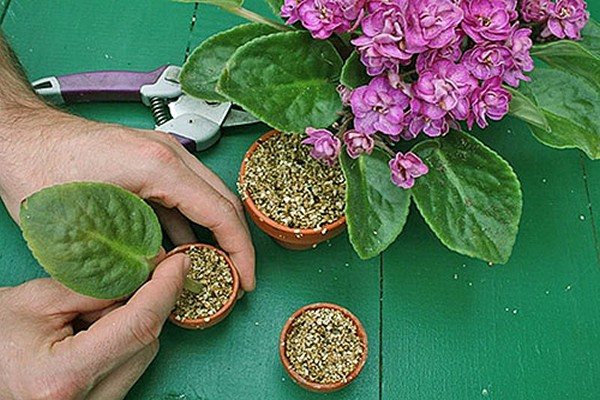

Violet, or Saintpaulia, is a lovely, slightly moody plant. This only applies to indoor varieties. Correct, timely, high-quality care is needed for the full development of the plant. Without observing these rules, the plant is predicted to die. Only you are able to create comfortable conditions for the health of violets, unlike wild varieties that independently choose the conditions for growing.
A healthy, high-quality condition of the soil gives positive results in any scenario, and is also able to protect a vulnerable plant from the appearance of pests and diseases that become detrimental to violets, since drugs are not able to cure fungal and viral diseases of Saintpaulia. The correct composition of the soil is the key to plant health !!!
The most extraordinary story about the origin of Saintpaulia
One of the main questions of our article is as follows: when and under what circumstances was the plant discovered? What a violet looks like, Baron Walter von Saint-Paul, who was the governor of the African state, knew for sure. During the exploration of the Ulugur and Uzambar mountains, the researcher met a flower that conquered him with its beauty. The sky-blue glow surprised Saint-Paul so much that he immediately wrote a description of it and sent it to his father, a well-known orchid collector at the time.
We also recommend reading
At first, the night violet was “enrolled in the ranks” of the Gesnerian family.
The official birth year of the flower was 1893, when the plant was described in detail and officially presented at an international exhibition.
Having earned recognition, the violet, whose homeland was the African continent, almost instantly adorned window sills in most countries of the world.
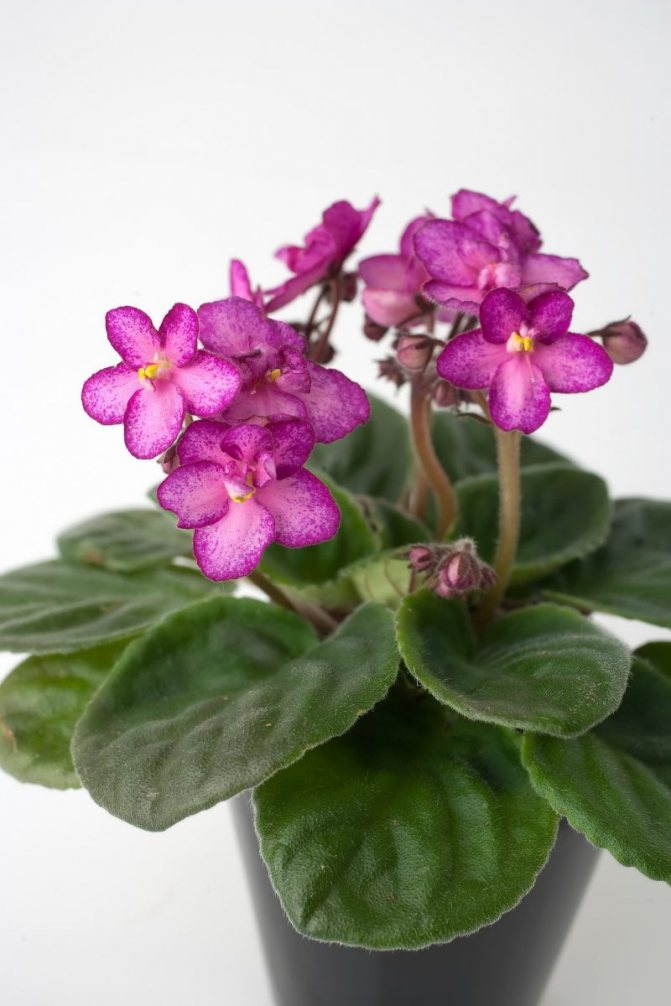

Features of Saintpaulia, its appearance
You already know that the homeland of violets is Africa. Saintpaulia is a perennial plant up to 30 cm high. It has a short stem, large leaves, oval shape. Certain types of violets have heart-shaped or elongated leaves. The color also varies from light to dark green.
Illustrative photos confirm the incredible variety of colors and shapes. You can find a flower with double, corrugated, wavy, or fringed petals. The average diameter is 2-4 cm, there are both monochromatic and multicolored colors. Night violet and Labrador violet, marsh violet and moth violet ... One gets the impression that all these varieties are competing with each other in beauty.
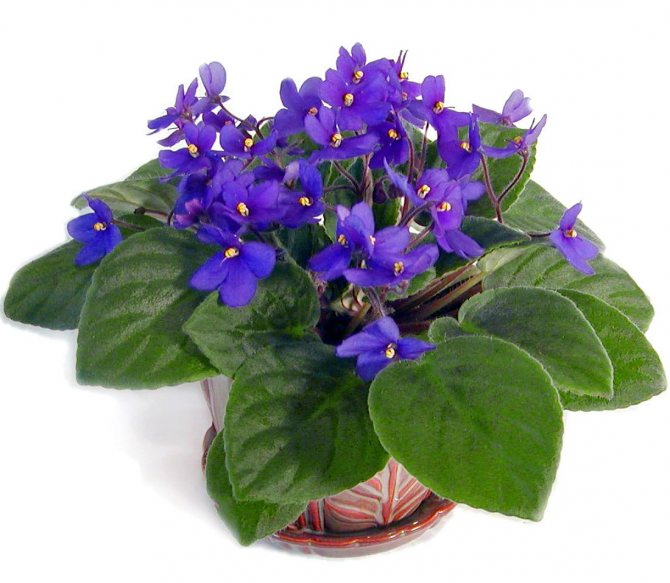

Previously, indoor Saintpaulia was odorless and delighted flower growers exclusively with its appearance. As a result of a long and painstaking selection work, hybrids with a delicate, very pleasant aroma were bred.
Auspicious days
The spring and summer months are most favorable for planting Saintpaulia, when the growing plant will receive sufficient light and heat for at least 12 hours a day. At other times, for example in November, daylight hours become shorter, so the chances of growing a healthy flower are reduced. However, experienced flower growers have special tools and knowledge for planting and further nursing violets also in the autumn-winter period. In their arsenal there are heaters and phytolamps that help create optimal conditions for the growth of Saintpaulia.




